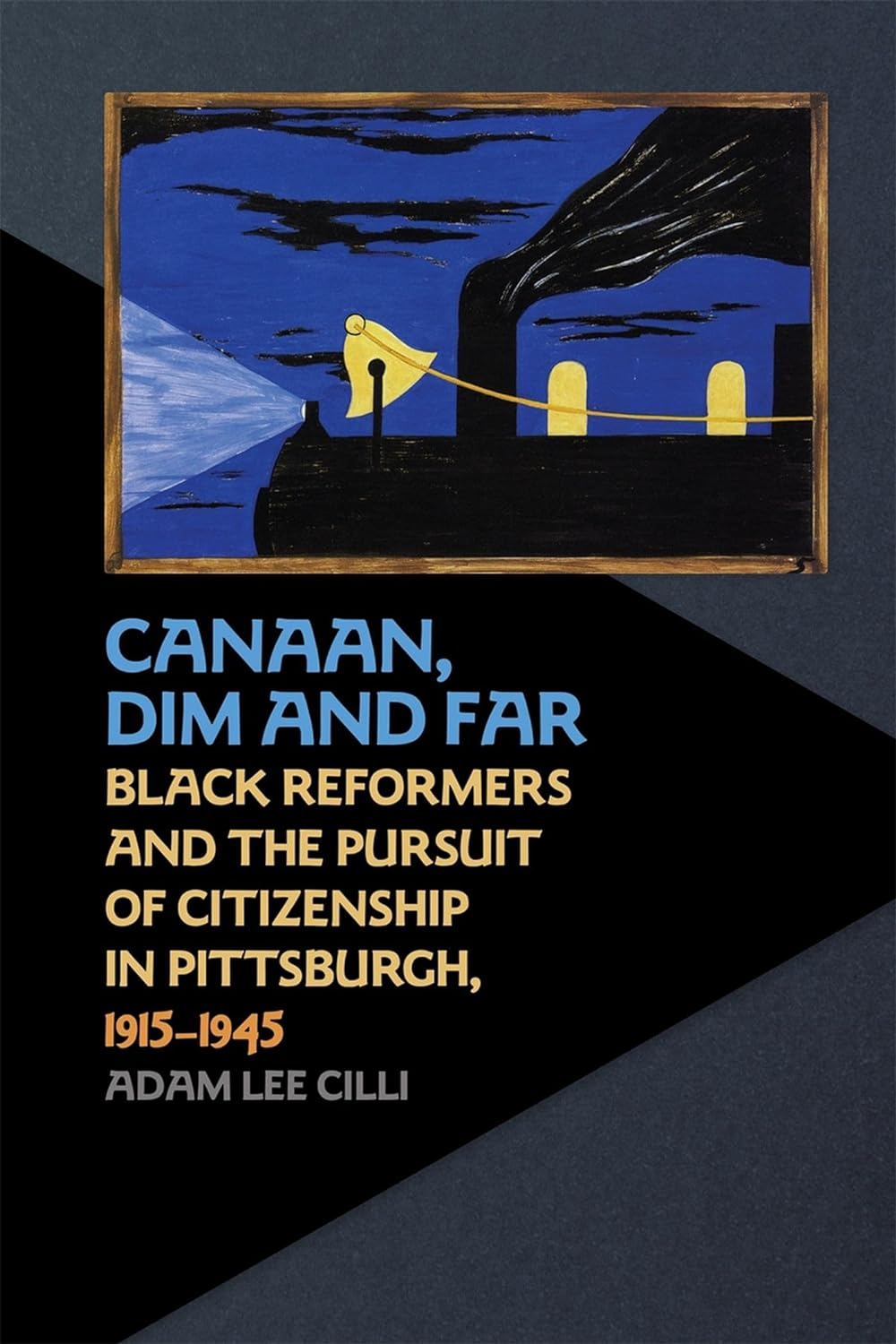Historian Adam Lee Cilli’s Canaan, Dim and Far: Black Reformers and the Pursuit of Citizenship in Pittsburgh tells the overlooked history of Black reformist and radical activism in Pittsburgh, Pennsylvania. He frames the Steel City as an urban space through which Black native Pittsburgh residents and Southern migrants alike contested their rights to citizenship in the wake of evolving physical, economic, and legal anti-Black violence. Spanning from the Progressive era until the end of World War II, this case study ultimately points to the centrality of Pittsburgh’s burgeoning Black activist community in political and civil rights activism that emerged in the urban center.
Cilli begins his study with DuBois’ 1903 The Souls of Black Folk, in which he introduced his concept of the “talented tenth.” While the mainstream literature on racial uplift and Black progressivism tends to focus on the middle class, bourgeois tendencies of organizations that adopted DuBois’ framing of the “talented tenth” as an elite group of educated Black Americans that would inevitably lead the race in its quest for uplift, Cilli urges us to consider a more nuanced understanding of their activism. Through a critical engagement with sources such as the Pittsburgh NAACP (PNAACP), Urban League Pittsburgh (ULP), and Pittsburgh Courier, he paints a rich and multilayered picture of Black reformists’ commitments to major issues plaguing the Black working class. Cilli includes personal correspondence between leading PNAACP activists such as Homer Brown, Daisy Lampkin, and others to exemplify the “social safety net” (6) that the ULP and PNAACP constructed. While it did not materialize into a revolutionary transformation of Pittsburgh’s racial landscape, Cilli asserts that it did create indisputable improvements in the daily life of Black Pittsburgh residents.
Cilli’s main argument is that historians must think past the reductionist framing of “racial uplift” activism of the 20th century as merely interested in organizing on behalf of the interests of the Black elite. While Pittsburgh’s Black middle class understood itself as a vanguard of sorts, Cilli’s study focuses on the obscured connections between Black radicals and reformists during the interwar period. Ultimately, their connection hinged on their mutual understanding that organizing outside of the parameters of the state was inevitable given the insidious nature of Jim Crow state sanctioned terror.
